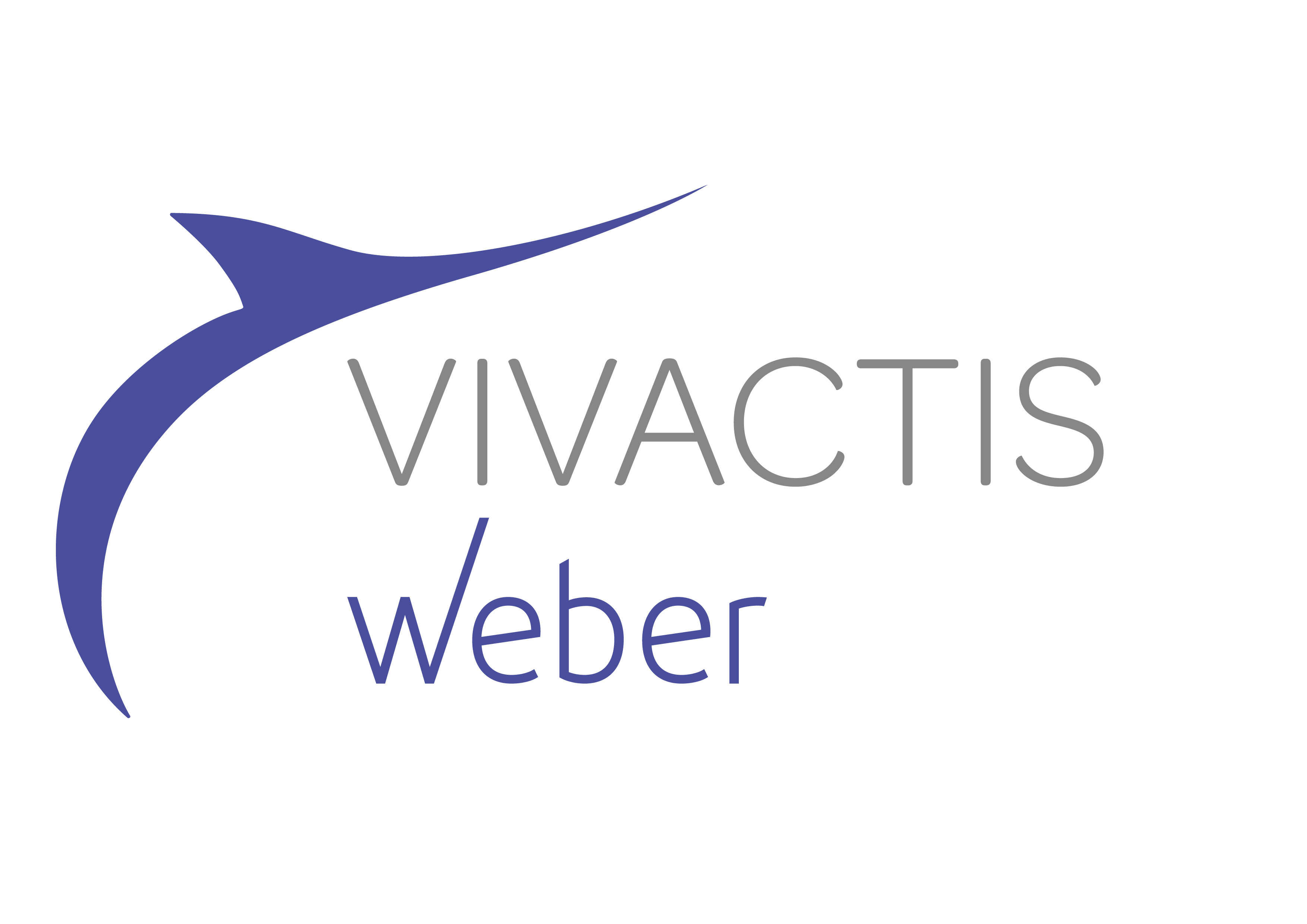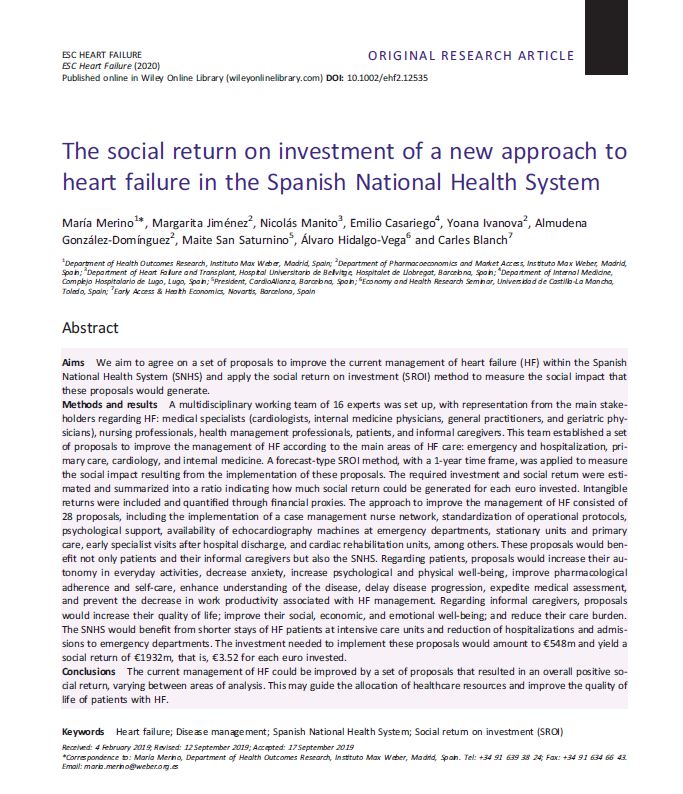The social return on investment of a new approach to heart failure in the Spanish National Health System
Año: 2020
Revista: ESC Heart Failure
Abstract
Aims: We aim to agree on a set of proposals to improve the current management of heart failure (HF) within the Spanish National Health System (SNHS) and apply the social return on investment (SROI) method to measure the social impact that these proposals would generate.
Methods and results: A multidisciplinary working team of 16 experts was set up, with representation from the main stakeholders regarding HF: medical specialists (cardiologists, internal medicine physicians, general practitioners, and geriatric physicians), nursing professionals, health management professionals, patients, and informal caregivers. This team established a set of proposals to improve the management of HF according to the main areas of HF care: emergency and hospitalization, primary care, cardiology, and internal medicine. A forecast‐type SROI method, with a 1‐year time frame, was applied to measure the social impact resulting from the implementation of these proposals. The required investment and social return were estimated and summarized into a ratio indicating how much social return could be generated for each euro invested. Intangible returns were included and quantified through financial proxies. The approach to improve the management of HF consisted of 28 proposals, including the implementation of a case management nurse network, standardization of operational protocols, psychological support, availability of echocardiography machines at emergency departments, stationary units and primary care, early specialist visits after hospital discharge, and cardiac rehabilitation units, among others. These proposals would benefit not only patients and their informal caregivers but also the SNHS. Regarding patients, proposals would increase their autonomy in everyday activities, decrease anxiety, increase psychological and physical well‐being, improve pharmacological adherence and self‐care, enhance understanding of the disease, delay disease progression, expedite medical assessment, and prevent the decrease in work productivity associated with HF management. Regarding informal caregivers, proposals would increase their quality of life; improve their social, economic, and emotional well‐being; and reduce their care burden. The SNHS would benefit from shorter stays of HF patients at intensive care units and reduction of hospitalizations and admissions to emergency departments. The investment needed to implement these proposals would amount to €548m and yield a social return of €1932m, that is, €3.52 for each euro invested.
Conclusions: The current management of HF could be improved by a set of proposals that resulted in an overall positive social return, varying between areas of analysis. This may guide the allocation of healthcare resources and improve the quality of life of patients with HF.
Keywords: Heart failure; Disease management; Spanish National Health System; Social return on investment (SROI)
Cómo citar: Merino, M., Jiménez, M., Manito, N., Casariego, E., Ivanova, Y., González-Domínguez, A., San Saturnino, M., Hidalgo-Vega, A., Blanch, C. (2020). The social return on investment of a new approach to heart failure in the Spanish National Health System (In press). ESC Heart Failure. https://doi.org/10.1002/ehf2.12535



